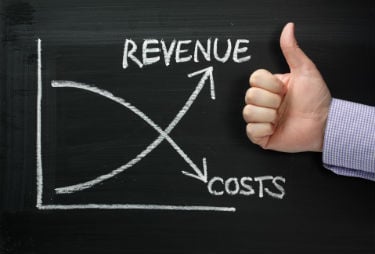How Much Money Is Your Business Making On Each Job?
 Sales Revenue per job - the Cost of Goods Sold per job = Gross Profit per job
Sales Revenue per job - the Cost of Goods Sold per job = Gross Profit per job
If you sell by the "job" you must price by the job.
Job Costing is the only way to know if your jobs are bid or estimated accurately (i.e. priced to meet your targeted profit margin). In order to create accurate and successful QuickBooks estimates, you need to have a database of actual costs, based on the following: 1) Direct Labor 2) Direct Materials and 3) Equipment Costs (either a rate of each piece of equipment owned or an equipment rental cost) 4: Overhead costs (i.e. a rate that is assigned usually on the basis of monthly indirect costs/labor hours for each job). By tracking actual job costs in these four categories you will have fundamental knowledge about the work you do for your customers. This historical database of actual costs in QuickBooks will empower you to model new bids or estimates with much more accuracy and confidence.
Priority 1: Know your Gross Profit per job
Start simple and keep it clean.
Understand that you must sort all company spending into COGS or Expenses. COGS are all the direct costs related to fulfilling a job (material, labor and equipment costs that go into an estimate).
In job costing think of “Expenses” as the overhead costs related to running your business which are not job specific (e.g. insurance, rent, marketing, etc.)
Your Chart of Accounts Setup needs to support your job costing goals.
Revenue
Cost of Goods Sold
Direct Labor (fully burdened with employer payroll taxes, workers compensation and any perks like health insurance or 401K contributions)
Materials
Equipment
Expenses
Administrative Labor Costs
Managerial Labor Costs
Marketing/Advertisement
Rent
Insurance
Professional Fees
Bank Charges and Interest Expense
Depreciation
Travel (not job specific)
Etc.
Remember to apply Overhead Costs to your job costs
Once you have sufficient data you can estimate your monthly overhead costs. You would add that to your labor, materials, and equipment costs based on either the number of days you dedicated to complete the project or number of man-hours dedicated to the project. This rate needs to be included in your project estimate.
Priority 2: Know your Profit Margin
Gross Profit/Revenue = Gross Profit Margin
Example: Say you had 5 jobs that brought in $35,000 = Revenue
You spent $27,500 in COSGS (=labor, materials, equipment and Overhead Rate)
Revenue-COGS=Gross Profit >> 35K-27.5k=7.5 GP
Gross Profit Margin= Gross Profit/Revenue >> 7.5K/35K =21%
You will increase or decrease your profit margin based on how much competition you have. And by tracking this ratio or index over time you can monitor your company’s performance.
Caveats
- Keep it simple
- Be consistent
- Compare estimates to actual results aka budget vs actual comparison
Conclusion: If you don’t know whether or not you are making a profit you are likely paying for the privilege to do work for your customers. You may be very busy, but not for long.
Photo Credit © Dollar Photo Club / thinglass


Comments